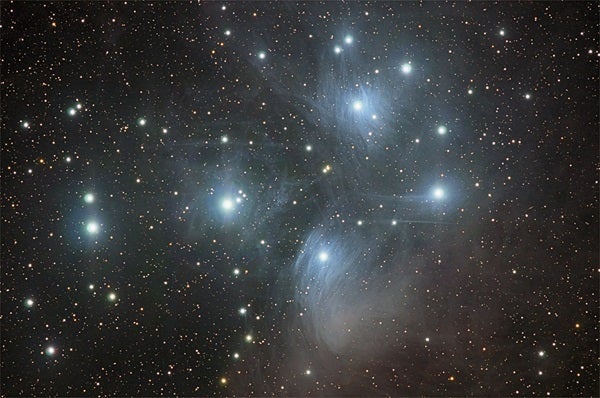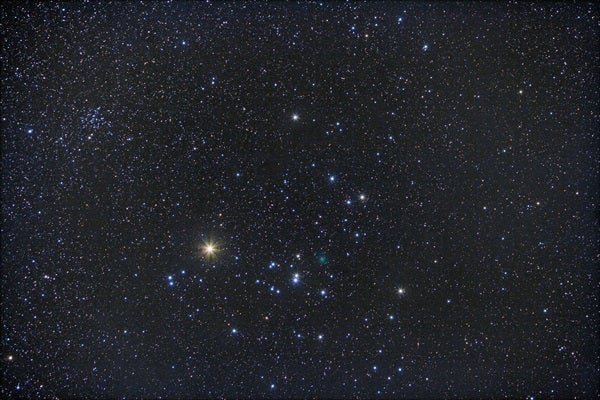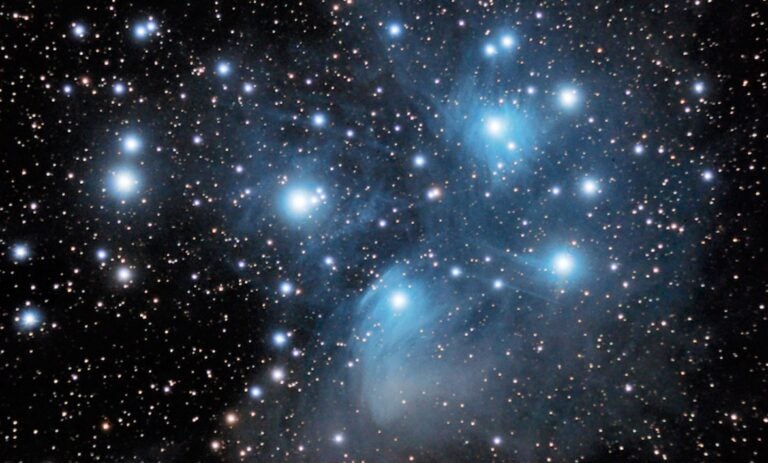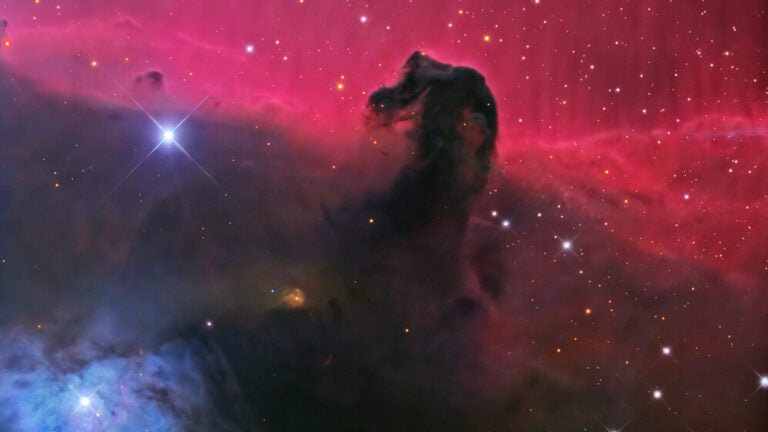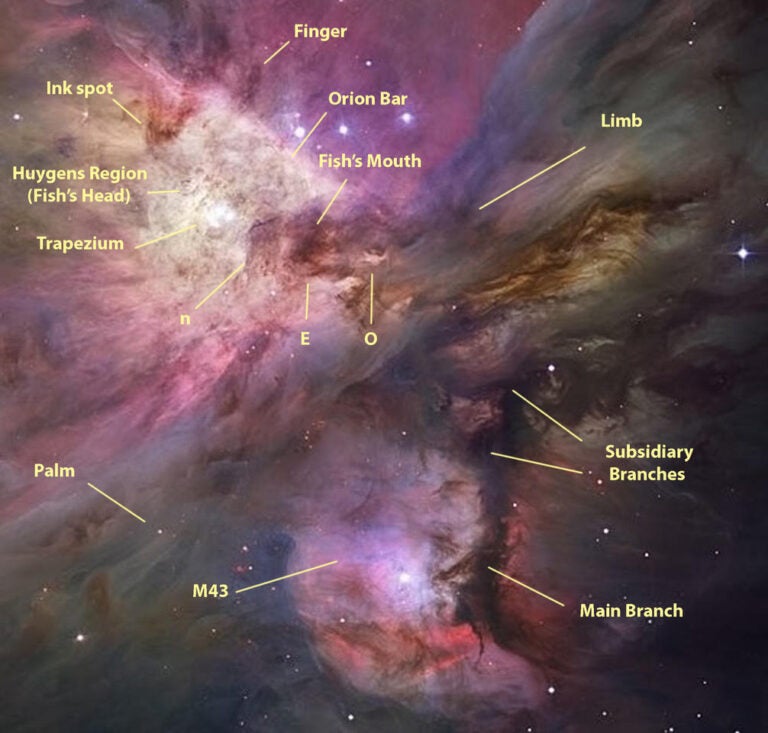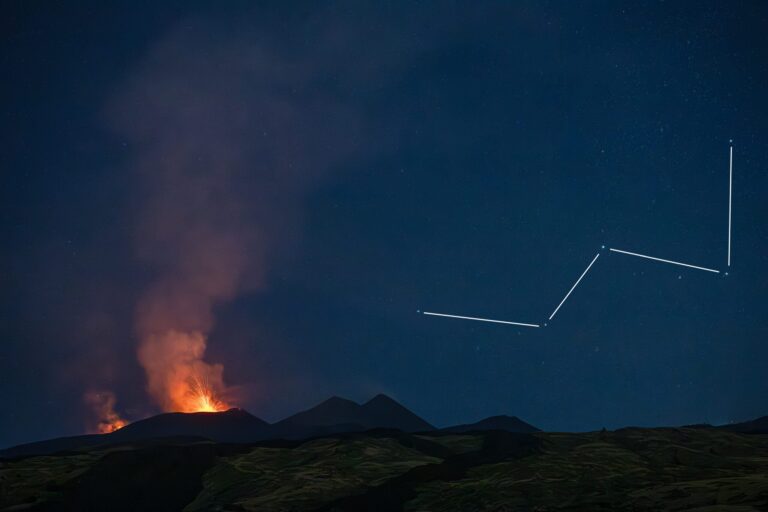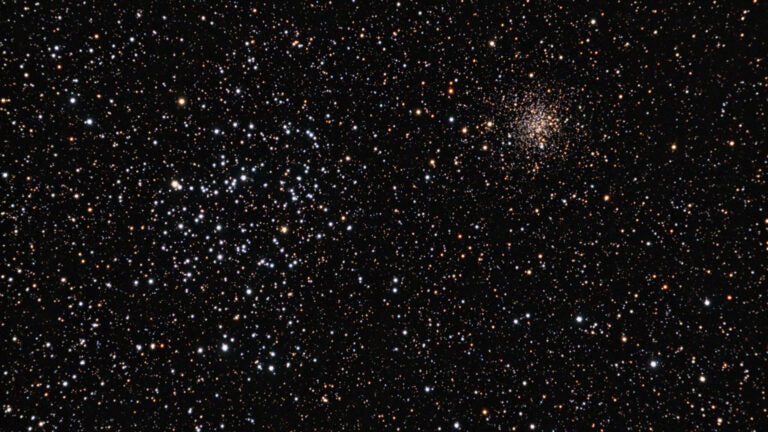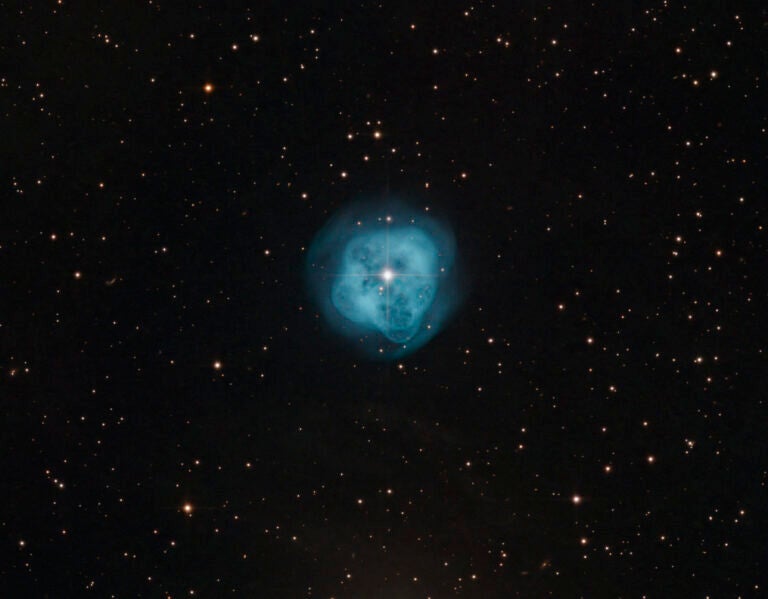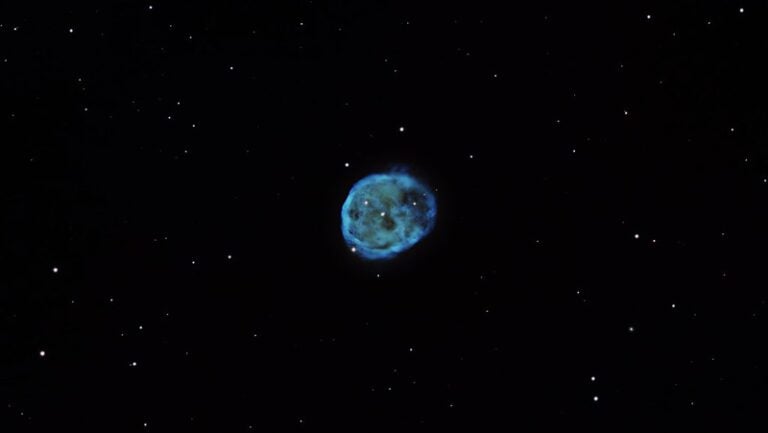Those will all come in due time, but this month I’d like to focus on two of the most dazzling open star clusters visible through binoculars. And they lie almost next to each other in Taurus the Bull. I am referring, of course, to the Hyades and the Pleiades. Both can be readily seen with the unaided eye. But through binoculars, each explodes with stardust.
Let’s start with the Hyades. You probably know them as the Bull’s V-shaped head, with brilliant Aldebaran marking his angry red eye. Nearly 400 stars are held within the group’s 5.5° span. A third of these shine brighter than 9th magnitude, the limit for many binoculars under suburban conditions. Most can squeeze them all into a single field of view.
The Hyades collectively floats 151 light-years away, making it the closest open star cluster to our solar system. Aldebaran, however, is closer still, only about 60 light-years away. So, while it adds color and pizzazz, its location is purely coincidental. That means the cluster’s brightest star, at magnitude 3.4, is actually yellowish Theta2 (θ2) Tauri. Theta2 joins with magnitude 3.8 Theta1 (θ1) Tauri to form a wide naked-eye binary star. Both are southwest of Aldebaran.
Another close-set Hyadian stellar duet is Delta1 (δ1) and Delta2 (δ2) Tauri. You’ll find both set about halfway between Epsilon (ε), representing his fainter western eye, and Gamma (γ), marking the tip of the Bull’s pointy nose. Delta1 is a type-K star and shows a delicate yellowish tinge, while Delta2 is classified as a pure white, type-A sun.
Other subtle colorations can be spotted among the stars of the Hyades. For instance, both Gamma and Epsilon Tauri are also type-K suns. Can you spot their delicate yellowish tints?
In Greek mythology, the Hyades were the five daughters of Atlas, who is often depicted as supporting Earth on his shoulders. After the death of their brother, Hyas, the mourning sisters were transformed into a cluster of stars. The story goes that as the Hyades set in the early spring sky, their tears become our April showers.
Keeping things in the family, let’s visit the Hyades’ mythological half-sisters, the Pleiades, or Seven Sisters. In one popular Greek legend told by the first-century a.d. Latin author Gaius Julius Hyginus, the sisters spent seven years trying to fend off the unwanted advances of Orion the Hunter. The chase continued until Zeus stepped in and placed the Pleiades in the sky, but Orion is persistent. He still pursues them to this day.
There are many more than seven members to this celestial family, however. Dozens of stars come into view through even the smallest pocket binoculars. In all, about 100 stars make up the clan. They lie some 380 light-years away, or about two and a half times farther than the Hyades.
Many Pleiads create striking pairings in the dipper-shaped cluster. One of the nicest is the duo of Atlas (27 Tauri) and Pleione (28 Tauri). Together they create the “handle” that extends eastward from the Pleiades’ “bowl.” Also take a look at Asterope (21 Tauri) and 22 Tauri, a wide twosome north of the bowl. They shine at magnitude 5.8 and 6.4, respectively, and are separated by 2.5′. Finally, there is 3rd-magnitude Alcyone (Eta [η] Tauri), the brightest Pleiad. Alcyone creates a pretty pair with 6th-magnitude 24 Tauri about 2′ to its west.
While studying the Pleiades through a 4-inch (102mm) refractor from Venice, Italy, on October 19, 1859, Ernst Wilhelm Tempel noticed a dim glow extending southward from Merope (23 Tauri). He described it as “a stain of breath on a mirror.” Tempel’s Nebula, as it was later nicknamed, is now listed as NGC 1435 in John Dreyer’s New General Catalogue.
It turns out that Tempel spotted only the tip of an iceberg. We now know that the entire cluster is engulfed in myriad grains of interstellar dust visible only by reflected starlight, known as a reflection nebula. While photographs show these bluish clouds beautifully, visually seeing any hint of the reflection nebulosity takes determination, high-quality optics, and a top-notch night. Under ideal conditions, NGC 1435 is faintly visible through 70mm binoculars as a fan-shaped wisp extending southward from Merope.
How about you? Can you spot Tempel’s Nebula? Give it a try and send me your results. But don’t be fooled: Hazy skies and ill-mannered optics can cause wispy glows to appear around all of the stars. The shape and direction of NGC 1435 are dead giveaways. If you have any doubts, double-check by looking back at the Hyades. They contain no trace of nebulosity.
Next month, we will cross-examine the Seven Sisters’ harasser, Orion. In the meantime, I’d love to hear of your binocular adventures and conquests. Contact me through my website, philharrington.net.


